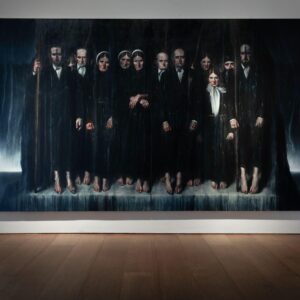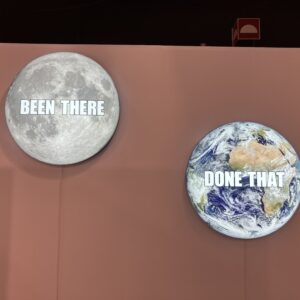30 June to 26 August 2006.
University Gallery, University of Leeds
LS2 9JT
Monday –Friday 10.00 am – 5.00 pm
This exhibition marks the conclusion of Judith Tucker’s AHRC Research Fellowship in the Creative and Performing Arts in the School of Fine Art, History of Art and Cultural Studies, University of Leeds. She is a painter and she exhibits regularly both in the UK and abroad. She is also co-convenor of LAND2 a network of artists associated with Higher Education who are concerned with radical approaches to landscape, with a particular focus on memory, place and identity.There is a catalogue available with essays by Griselda pollock and Diane Perkins, curator of Gainsborough’s House.
Judith Tucker’s recent paintings and drawings explore the Baltic seaside resort Ahlbeck. The incentive for this series of exhibitions was pre-war holiday photographs that her grandmother brought with her when she escaped from Germany in 1938.Through visiting the resort and making work on location exploring the evocative mixture of decay and lavish restoration against the flat vastness of the Baltic, she became intrigued with the relation between certain temporary structures and the landscape: notably the ubiquitous Strandkörbe. These hybrids between beach hut and deck chair offer the possibility of a momentary shelter.
This new work explores the risk of an intimate space within the basket contiguous with the open expanse beyond. These structures fluctuate between being places of protection and in their very deficiency becoming almost mawkish ciphers of vulnerability. Huddled together in groups they taken on an almost anthropomorphic quality providing a resonant motif for the work. They could be thought of as objects of ridicule: a combination of kitsch, camp and nostalgia,comfortable chairs from which to experience the ‘sublime’. The physical surfaces of the studio-based paintings are intriguing and seductive, employing a wide assortment of glazing techniques and varnishes as well as metallic leaf and pearlescent pigments. All paintings appear altered according to the light but these appear striking so. Different aspects of the image become visible at different times according to the light and the position of the viewer, echoing the structures of memory. The large-scale drawings are selected from an extensive series. The scale of the drawings means that the figures within the strandkörbe appear to be disconcertingly almost three quarter life size. These figures appear to be absorbed in various private, everyday activities. Both the figures and the space depicted within the strandkörbe have become unsettled, perhaps transmuted through drawing into an ambiguous relation of pain to leisure.
Versions of this exhibition will tour to the following venues:
Resort (vi) 30 September – 29 October 2006.
New Hall Art Collection,
University of Cambridge CB3 OBF
Daily 10am to 6pm
Resort (vii) 18 November 2006 –20 January 2007
20-21 Visual Arts Centre,
Lincolnshire DN15 6TB
Tuesday to Saturday – 10.00am to 5.00pm
Supported by the Arts and Humanities Research Council through the AHRC’s Fellowships in the Creative and Performing Arts Scheme



